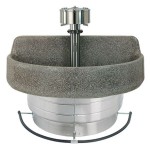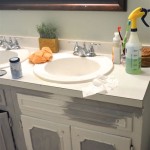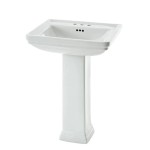Can a Bathroom Vanity Top Be Painted?
The bathroom vanity top is a focal point of the space, often made from materials like granite, marble, quartz, or laminate. Over time, these surfaces can become stained, scratched, or simply outdated. While replacing the entire countertop is a significant investment, painting it offers a more budget-friendly alternative to refresh the look of your bathroom. However, the feasibility of painting a bathroom vanity top depends on the material it’s made from and the desired outcome. This article explores the intricacies of painting bathroom vanity tops, providing guidance on suitable materials, preparation techniques, and the potential risks involved.
Suitable Materials for Painting
Not all bathroom vanity top materials are suitable for painting. Certain surfaces, like natural stone, are porous and can absorb paint unevenly, leading to an inconsistent finish. Conversely, some materials, like laminate, are designed to resist paint adhesion, making them difficult to paint successfully. The most suitable materials for painting are those that are smooth, non-porous, and have a relatively even surface.
Here are some materials that are generally suitable for painting: *
Laminate countertops:
Laminate is a cost-effective option and often used for bathroom vanity tops. While it can be more challenging to paint due to its non-porous nature, proper preparation and the use of specialized primers can yield satisfactory results. *Cultured marble:
Cultured marble is a composite material made from acrylic resin and marble dust. It is relatively smooth and non-porous, allowing for successful painting with proper preparation. *Acrylic countertops:
Solid surface acrylic countertops are popular for their seamless appearance and durability. These surfaces can be painted effectively with the right primer and paint. *Formica:
Formica is a brand of laminate countertop material, often used in bathrooms due to its water-resistant properties. While it can be challenging, painting Formica can be successful with careful preparation and the use of a specialized primer.Preparation Techniques for Painting
Proper preparation is crucial for a successful paint job. Here are some key steps involved: *
Cleaning:
Begin by thoroughly cleaning the countertop to remove dirt, grease, and any residue that may hinder paint adhesion. Use a mild cleaner and avoid abrasive cleaners that could scratch the surface. *Sanding:
For laminate countertops, sanding is essential to create a slightly rough surface for the paint to grip onto. Use fine-grit sandpaper (180-220 grit) to lightly scuff the surface evenly. For other materials, sanding may not be necessary. *Priming:
Priming is a vital step that helps the paint adhere to the surface and provides a smooth base for the paint to bond to. Choose a specialized primer designed for laminate or other specific materials. Apply the primer evenly in thin coats, allowing each coat to dry completely before applying the next. *Masking:
Use painter's tape to protect surrounding areas from paint spills. Mask off the sink, backsplash, and any other adjacent surfaces to ensure a clean, professional finish.Potential Risks and Considerations
While painting a bathroom vanity top can indeed provide a fresh look, there are potential risks and considerations to weigh before embarking on the project: *
Paint Durability:
Depending on the type of paint and the surface material, painted bathroom vanity tops might not be as durable as original surfaces. Paint can chip, scratch, or become discolored over time, especially in a high-humidity environment like a bathroom. *Maintenance:
Painted vanity tops may require more maintenance than the original surface. Regular cleaning with mild detergents and avoiding abrasive cleaners can help preserve the painted finish. *Appearance:
While painting can refresh the look, it may not match the original color or finish perfectly. Be aware that the paint finish might not be as sophisticated as the original material. *Professional Help:
For complex or delicate surfaces, it's best to consult a professional painter. This ensures expertise in selecting suitable paints, primers, and application techniques for a successful and durable finish.Ultimately, the decision to paint a bathroom vanity top is a personal one. Weigh the benefits of a refreshed look against the potential limitations and risks. By understanding the challenges and best practices involved, you can make an informed decision that aligns with your desired outcome and budget.

Paint Bathroom Vanity Countertop Sink So Easy A Piece Of Rainbow

Paint Bathroom Vanity Countertop Sink So Easy A Piece Of Rainbow

Paint Bathroom Vanity Countertop Sink So Easy A Piece Of Rainbow
:strip_icc()/101922779-2cbc45e123c34827afb4f601723b03ca.jpg?strip=all)
How To Paint Bathroom Countertops

Can You Paint A Countertop Re Sick Of Absolutely Recreated Designs

Should You Be Painting Your Bathroom Countertops Caesarstone

I Have Always Wanted To Paint My Bathroom Countertop Hometalk

Paint Bathroom Vanity Countertop Sink So Easy A Piece Of Rainbow

How To Paint Tile Countertops And Our Modern Bathroom Reveal Bright Green Door
.jpg?strip=all)
Painting A Bathroom Vanity Again Dream Green Diy
Related Posts







